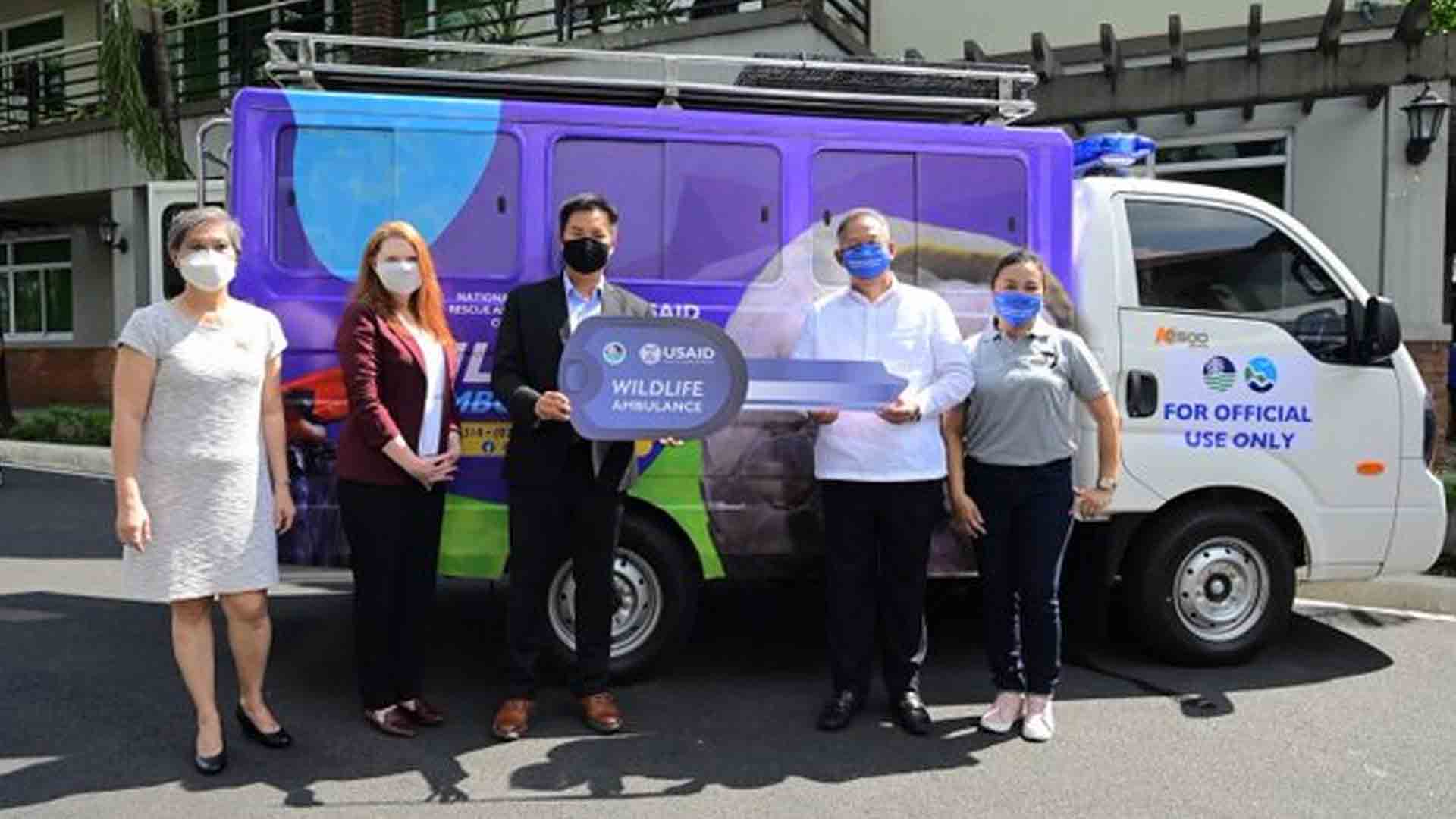To mark World Wildlife Day and strengthen the Philippine government’s wildlife rescue and rehabilitation efforts, the United States Agency for International Development (USAID) turned over on March 2 a new wildlife ambulance to the Department of Environment and Natural Resources (DENR).
The turnover of the wildlife ambulance was part of USAID’s PHP1.2-billion Protect Wildlife Project.
The wildlife ambulance, the first of its kind in the country, will help the DENR’s National Wildlife Rescue and Research Center improve its response time during wildlife rescue and retrieval, as well as facilitate the provision of immediate on-site care for injured and trafficked wildlife.
The specially designed vehicle has furnished cabinets for veterinary and wildlife handling equipment, a collapsible veterinary examination table and seats, and a roof rack for transporting animal crates, ladders, and other equipment for wildlife rescue.
USAID also handed over WILDBase, a centralized online system for recording and monitoring rescued wildlife. WILDBase will help rescue centers keep track of wildlife in their care, as well as medical records, inventory, and other important information for rescue center operations and decision-making.
DENR Undersecretary Ernesto Adobo, Jr. received the wildlife ambulance and WILDBase from USAID Philippines Environment Office Deputy Director Paul Seong at a turnover ceremony held at the Ninoy Aquino Parks and Wildlife Center.
“We appreciate USAID’s continued generosity to the DENR through the years. The enforcement of our wildlife laws, rules, and regulations does not end with the confiscation of the wildlife and the prosecution of the violators. With this new ambulance, WILDBase, and newest equipment and materials, we can more easily treat and monitor the health of confiscated wildlife.”
“This ambulance and online system complete USAID’s program of assistance for the DENR’s National Wildlife Rescue and Research Center, and complements the Center’s new wildlife diagnostics equipment, wildlife handling tools, and digital innovations,” said Seong.
Since 2016, the Protect Wildlife project has helped protect 750,000 hectares of diverse landscapes and seascapes, trained 2,300 men and women in improved environmental enforcement practices, and brought economic and environmental benefits to 95,000 Filipinos through environmentally sustainable livelihoods, community-based enforcement, and sustainably managed natural resources. (PNA)








